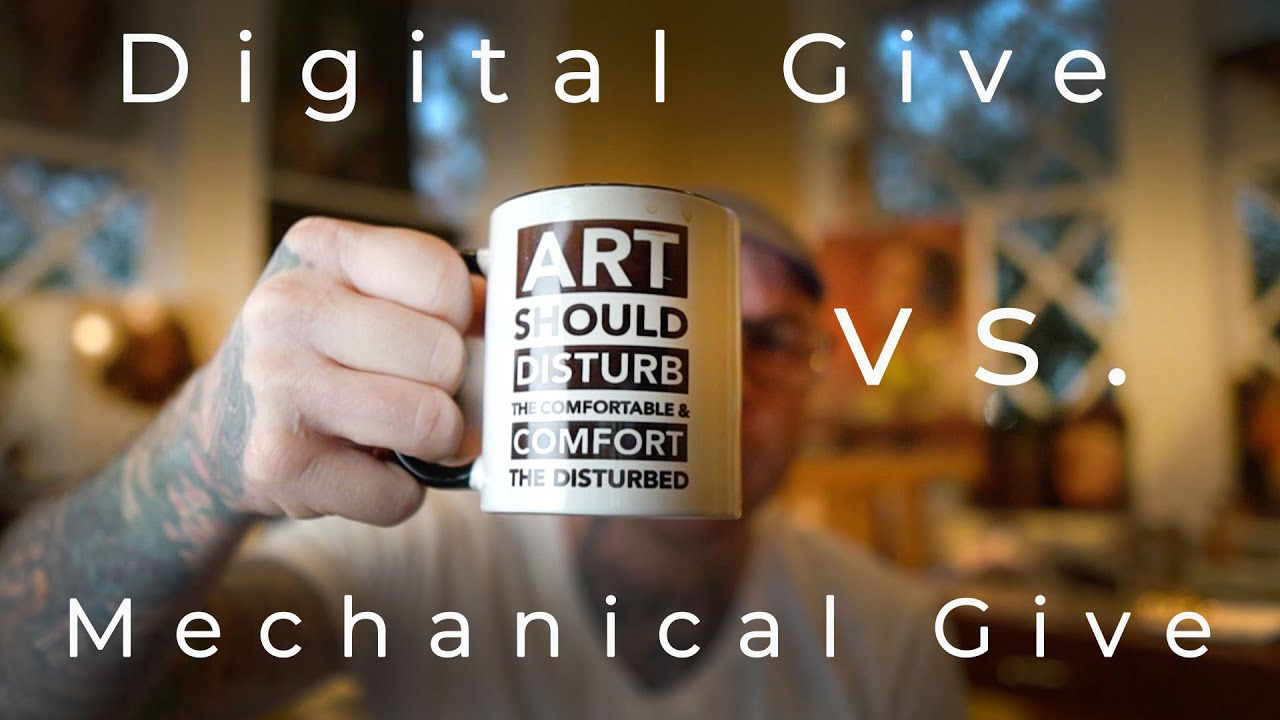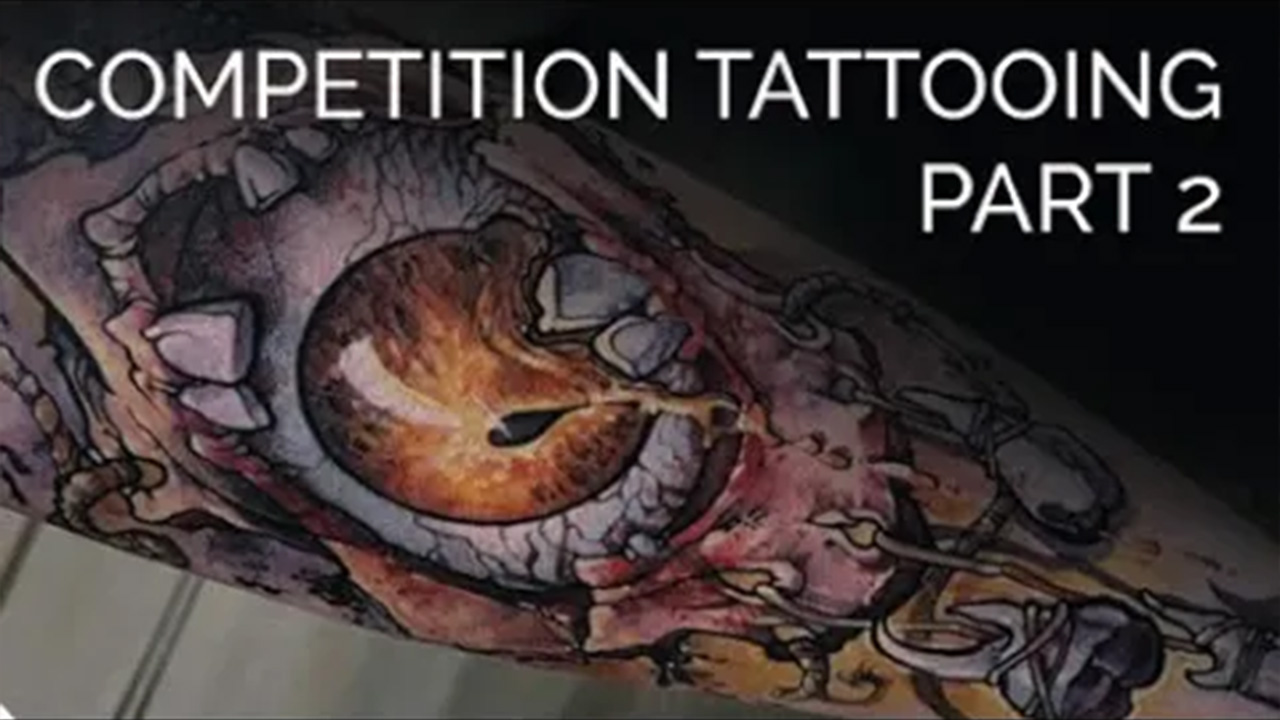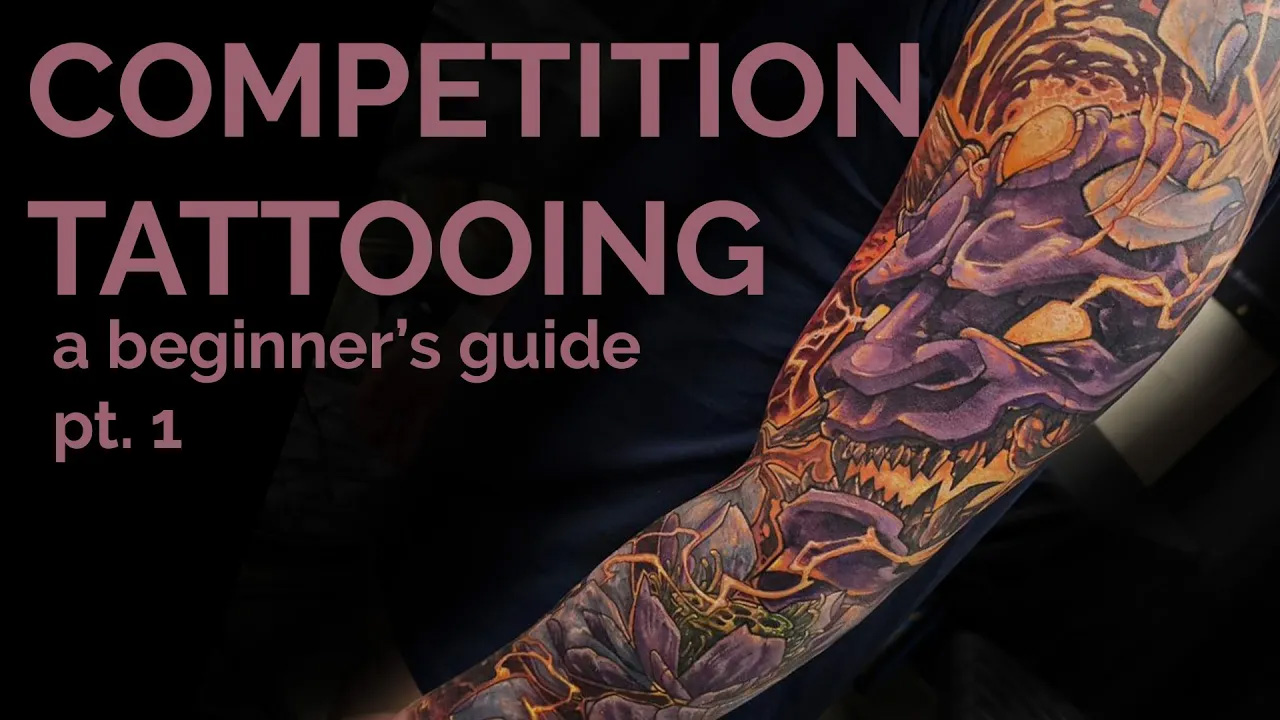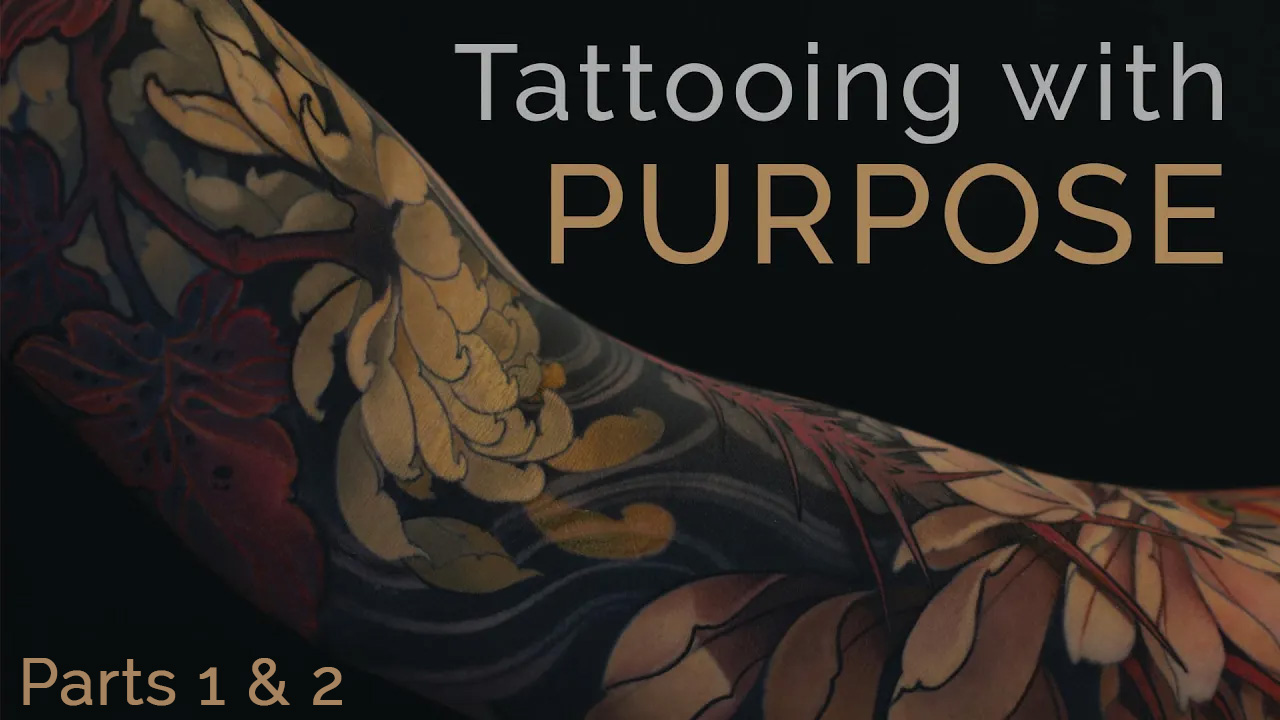Tattoo Techniques: White Ink Over Black Ink
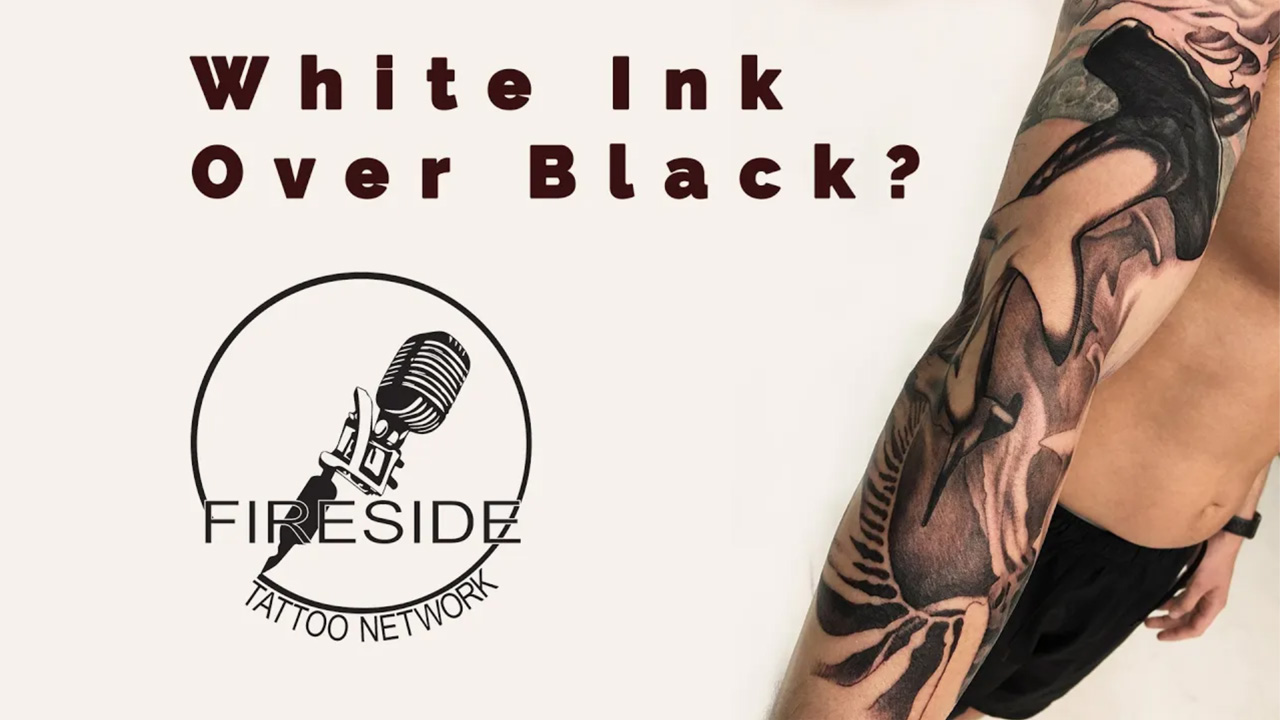
White Ink Over Black Ink!?! | 3 Minutes to Better Tattooing |
This article takes you through Jake’s approach to the dreaded cover-up tattoo! Now not every artist thinks of it this way, some tattooers really enjoy the challenge even make their whole careers on cover-ups, but for a lot of tattooers it can be a real struggle.
We aim to provide you with a broader understanding of what elements to look out for and interesting perspectives to tackle different troubles. We'll discuss topics such as splitting the existing tattoo into shapes, adding lighter or darker tones in order to balance layers in each stage of the tattoo, and what to plan for as you make multiple passes.
This episode was made possible thanks to:
Video By Jake Meeks —
Writing by Daniel Pushcarich —
Topics: Tattoo Techniques, Tattoo Cover Up, White Tattoo Ink, Tattoo Design Composition, reworking old tattoos, cover up tattoo on arm, tattoo sleeve, tattoo cover up sleeve, Opaque gray tattoo ink, Hammerhead Shark Tattoo
Plan As If the Client is Getting their Whole Body Tattooed
“I didn’t think I’d have to deal with that tattoo. But, as we start the first block-in sitting, the client mentioned that he wants to cover the band and move past it.”
- Jake Meeks
Tattooers doing large scale work, often when asked about their process for starting a design, mention planning ahead "as if" the client is getting their whole body tattooed. Ensure that you are taking into consideration not just the area you're going to work on, but also leaving room or shapes for potential additional tattoos or designs to be added on later. Not only does it make it easier for you or the next person, but it makes it easier and more satisfying for the client.

Planning out the design as if it will become a full sleeve is really ideal, and gives you a chance to think of some “What If” scenarios. Things like running up against existing tattoos when the client wants to extend the piece, what other ideas the client might have down the road, or in the case of the clip what would you come up with if they DO decide it’s time for a cover up.
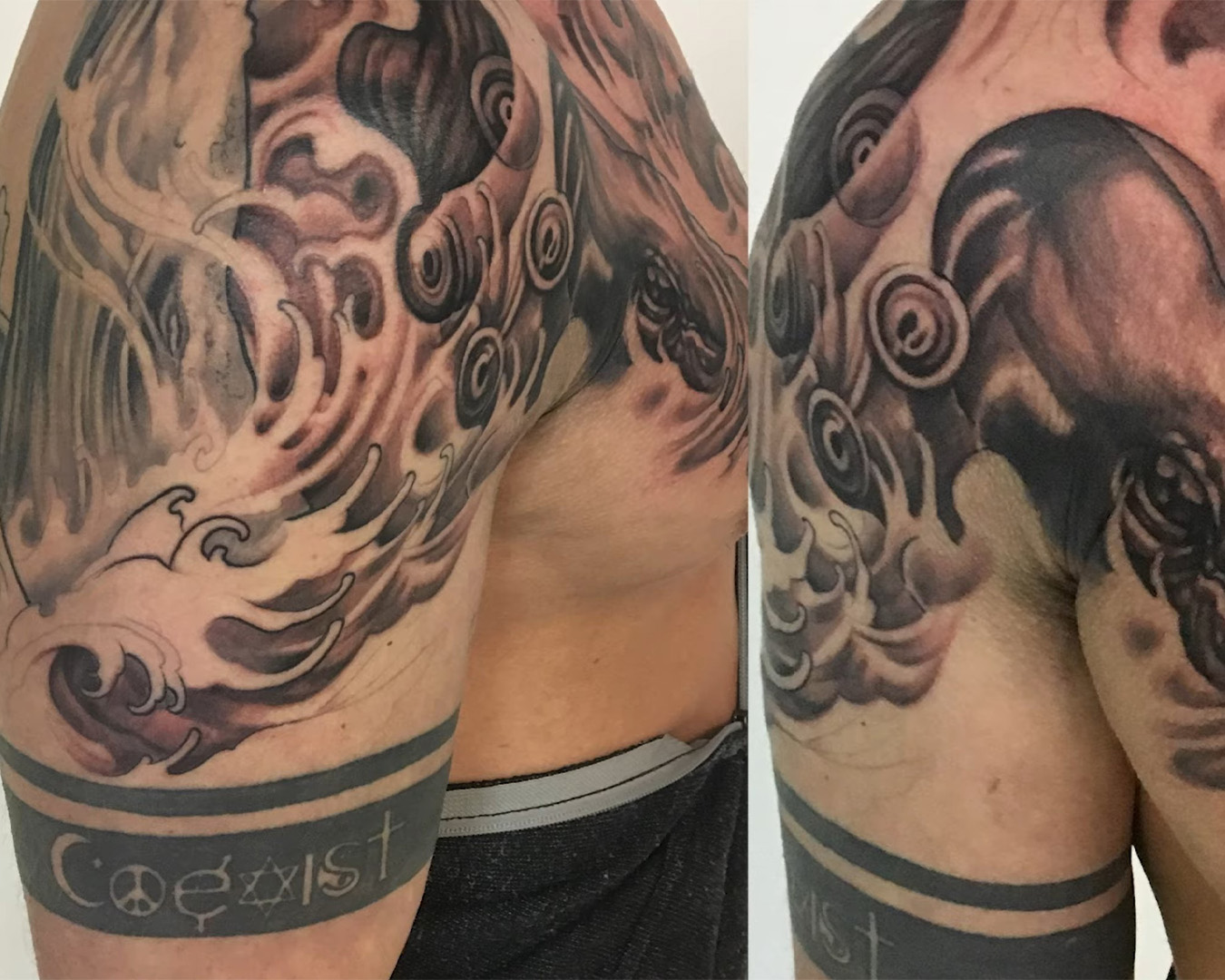
Honestly, it's really common for the client to change their mind or get inspired mid-tattoo. So always keeping that in mind and planning ahead “just in case” can keep you from getting into tight spots. And, could really be incorporated into most of your process and design choices.
Breaking Through The Shapes of the Old Tattoo
“To cover that band, I was going to need some big, beefy, kind of chunky shapes.”
- Jake Meeks
Cover up designs require careful consideration when it comes to the kinds of shapes used; they must effectively break apart, conceal and integrate with the problematic area. It's a good idea to section off or chunk out the old tattoo into smaller areas and shapes instead of trying to just cover the whole thing in one go.
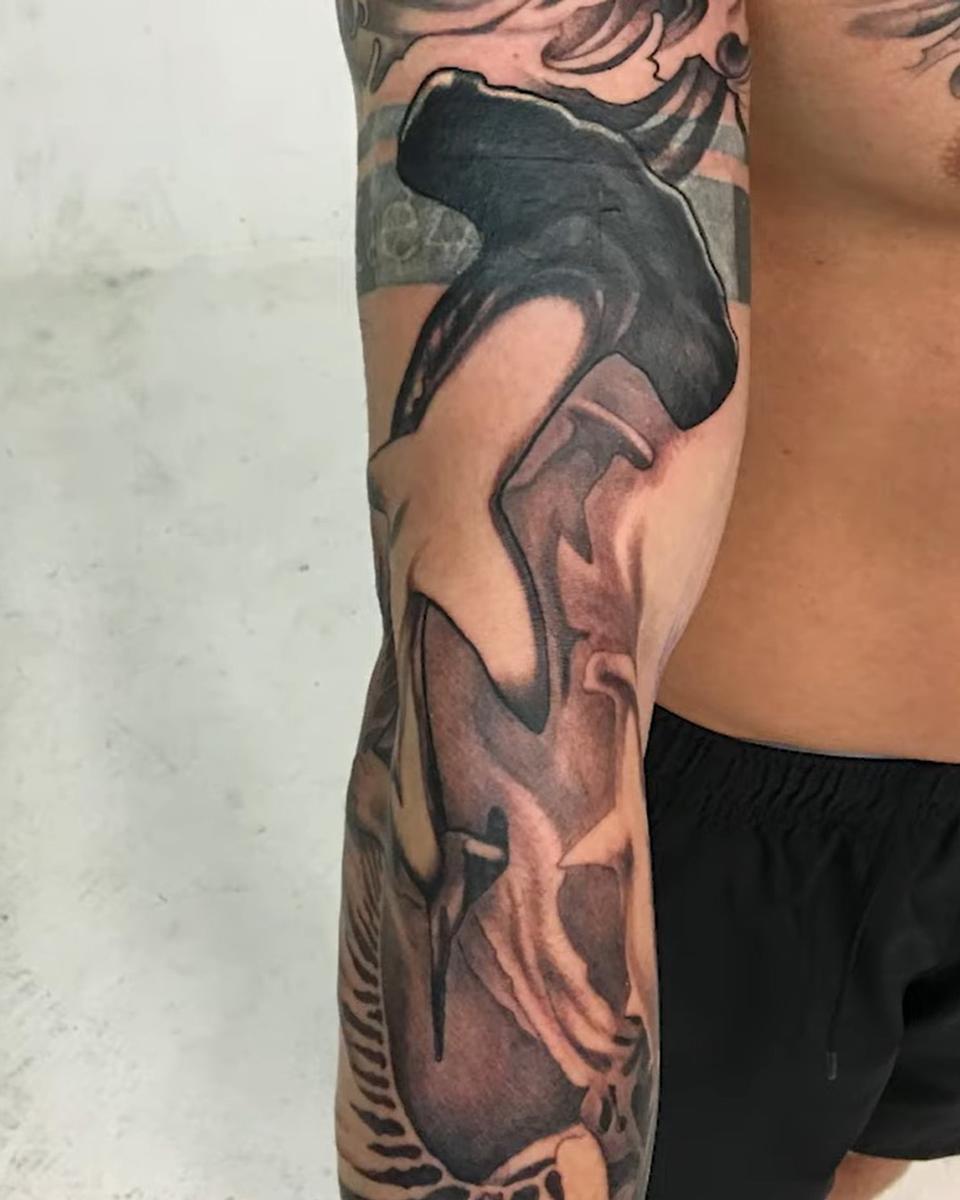
When you have a thick black armband like this, making huge wide shapes can create motion, fluidity, and direction in your design. For example, Jake used the blocky shape of this hammerhead shark to cut through the band at an angle which draws viewers' attention up into the waves before leading them down, past the old tattoo towards the other elements of the design.
You’re also going to need to make multiple passes at this stage, so packing in a layer of white into the thick dark areas at each pass can really help to break those shapes down even further. Now, you’ll never really be able to get rid of the black completely, this only lightens it about 15-20% every healed layer. This starts to neutralize the area and gives you some extra workability room to come in later with other shapes and colors.
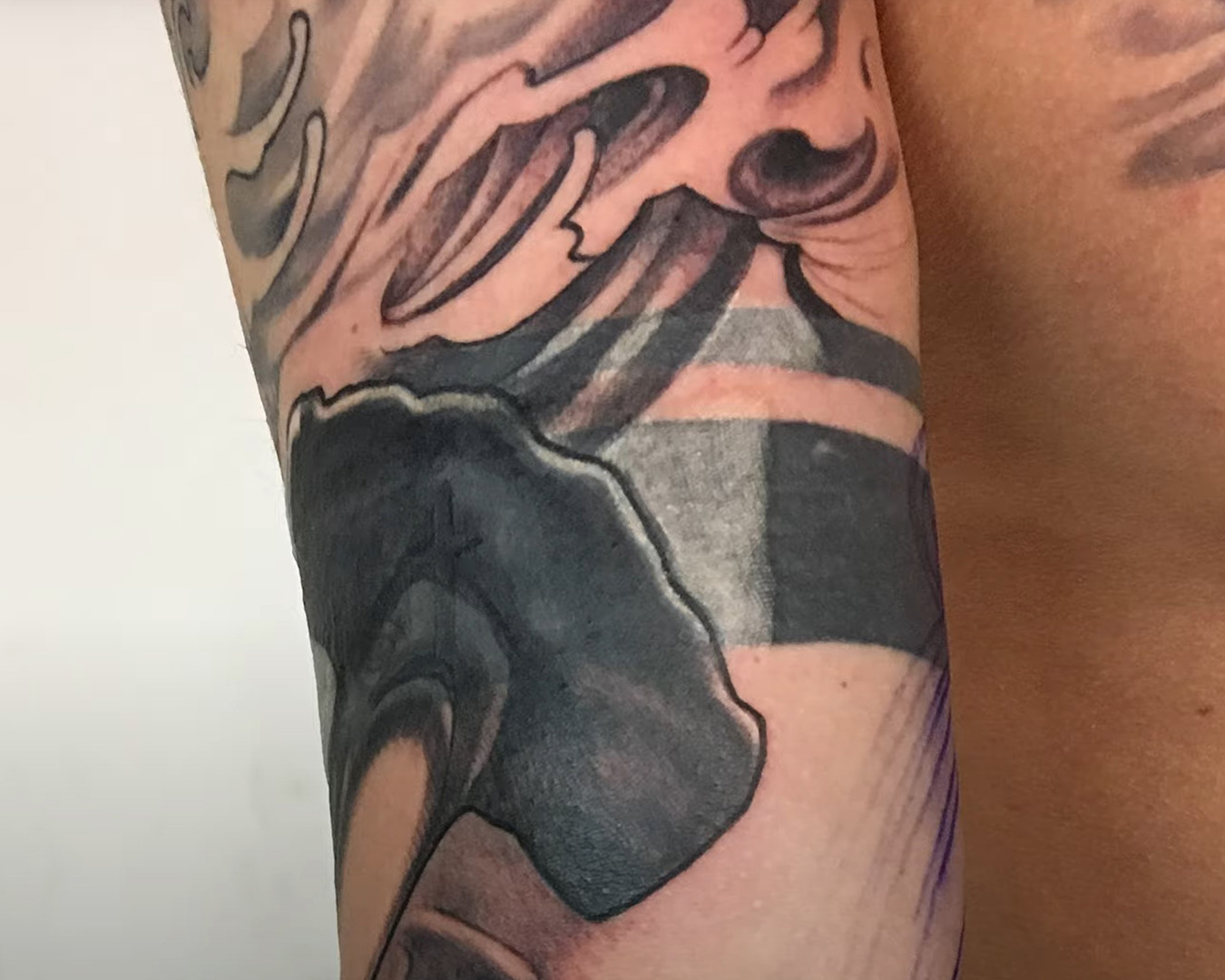
Lastly for this section, the key to ensuring the new design stands out over the old one is contrast. Make sure the new design has darker features and hues compared to the original tattoo, as this will make a huge difference in separating both designs.
Preparing a Better Foundation For the Cover Up Tatto
“It’s almost like preparing a ground for a painting. Like people who use raw umber to tone a canvas so they have a consistent background”
- Jake Meeks
As we mentioned before, really taking the time to dig into those big dark shapes and lightening them up every session will pay off in the long run. Also, getting some of the lighter areas to a more neutral tone gives you some opportunity to add in some light to dark value transitions later. By doing this you’re able to lay a foundation or ground to work from.
The armband in this case is really separated into two sections with a thin stripe of bright skin tone in between. So to combat this he layered in some medium opaque gray between and below the two sections lightened with white. This evens out the area around the problem and tones the bare skin more evenly for when it’s time to start adding in colors.
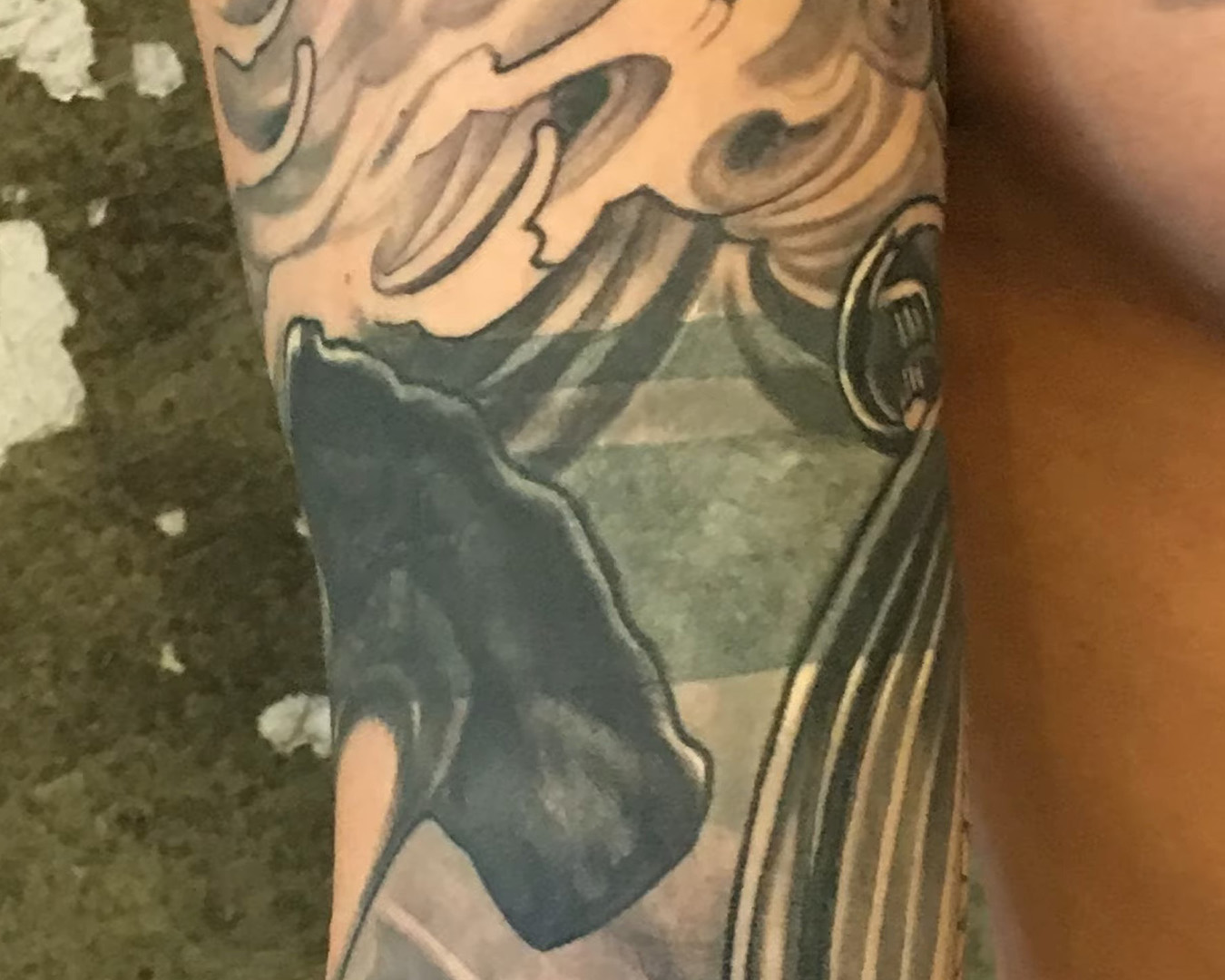
It also frees up real estate to add in background elements and environment shapes to the composition. Remember, the goal is to cover up, so take every opportunity to section off and obfuscate the old problem tattoo.
Contrasting Warms & Cools To Break Up Tattoo Shapes Further
“I wanted this [tattoo] to settle so that we could see what it does in the real world”
- Jake Meeks
So, just to round out the article let’s talk about color. If you’re working color into your cover-up design you might want to consider playing with the relationships between warm and cool colors. Techniques like this can really help to push that contrast more, pull the viewer’s eye and create more distance or separation between the old tattoo and the new cover up design.
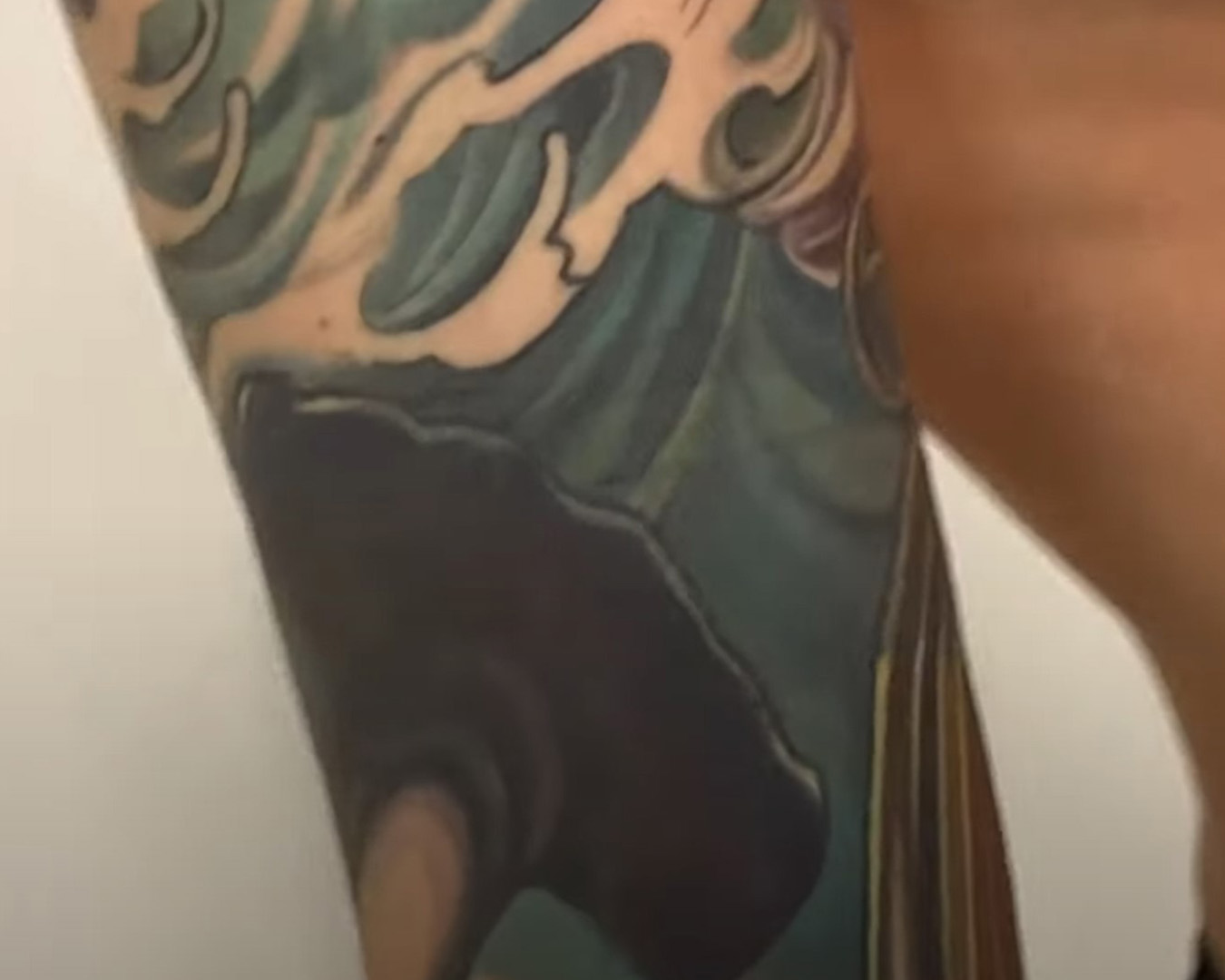
A lot of the time with cover-ups you really want to give some space or time between sessions to see how things are healing up. This way you can determine what areas might need a little bit more work or if things are saturating properly.
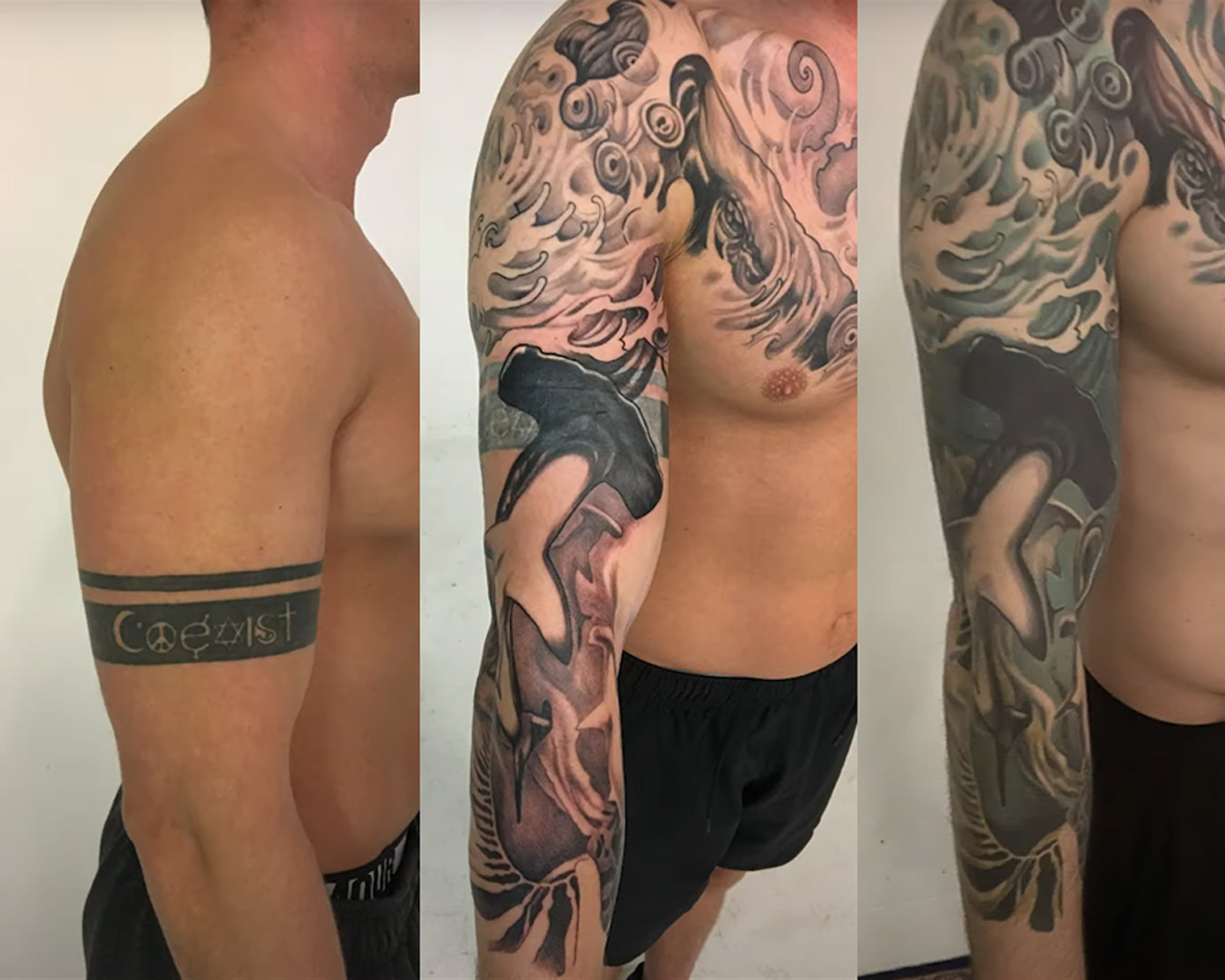
Always try to keep in mind that most cover ups are going to need multiple passes, so coming at it layers is going to be best practice. Just to Go back over the process a bit:
- First session - Packing big black shapes and doing my first layer of straight white over the band
- Second Session - Evening out the area and of bare skin with medium opaque gray and softening up the band some more, prepping it for shapes and colors
- Color Sessions - Adding in warm colors in the shark and cool colors in the water background to enhance the separation
We hope this has been helpful, and thanks so much for reading!
Want more tattoo education and resources?
Check out our Tattoo Techniques catalog HERE!
Transcript for this video can be found (here). All transcripts can be found (Here)
(Update when transcript page is made)
The Fireside Tattoo Network is home to the Fireside podcast, Fireside Technique video series and our Fireside Weekly blog.
The Fireside Tattoo podcast is hosted by veteran tattooer Jake Meeks, check out our episodes where we discuss, argue and wax philosophical, from tips for all levels of artists to trends in the tattoo world. Many guest artists have sat down for interviews and in-depth conversations and many more are planned…check back often!
Our Fireside Tattoo Overview video series offers informative, short, and detailed videos geared towards helping artists understand the science and nuances of tattoos and make more informed decisions to improve their work. We often take some of our more technical topics from our Fireside podcast and film an in-depth, narrated, time-lapse video showing exactly how Jake or our featured artists handle certain issues.
Support us while buying the stuff you need at the links below!
- Get 10% off the Neuma 4 with code “Fireside” at checkout
https://neumatattoo.com - Get 10 % off all S8 Tattoo products with promo code “Fireside”
https://s8tattoo.com/ - TattooNOW Website and Automation services at the link below
https://TattooNOW.com/Fireside - Get 10% off your order from Raw Pigments with code “fireside”
https://rawpigments.co/
Tattoo Techniques
Tattoo technique is, no doubt, an art of its own. Like any skill or trade, tattooing has been closely guarded by tattooers throughout modern history. We take a different approach here at Fireside. Our goal is to embrace the information age by making a conscious effort to help artists of all skill levels solve their technical tattoo challenges.
We'll touch on topics like:
We’ve got a plethora of podcasts on being a well-rounded tattoo technician:
Fireside Tattoo Podcast
Recent News
Inside Fireside: Mentality, Pain Management, and the Art of Client Care with Kurt Jacobson
- 09/06/24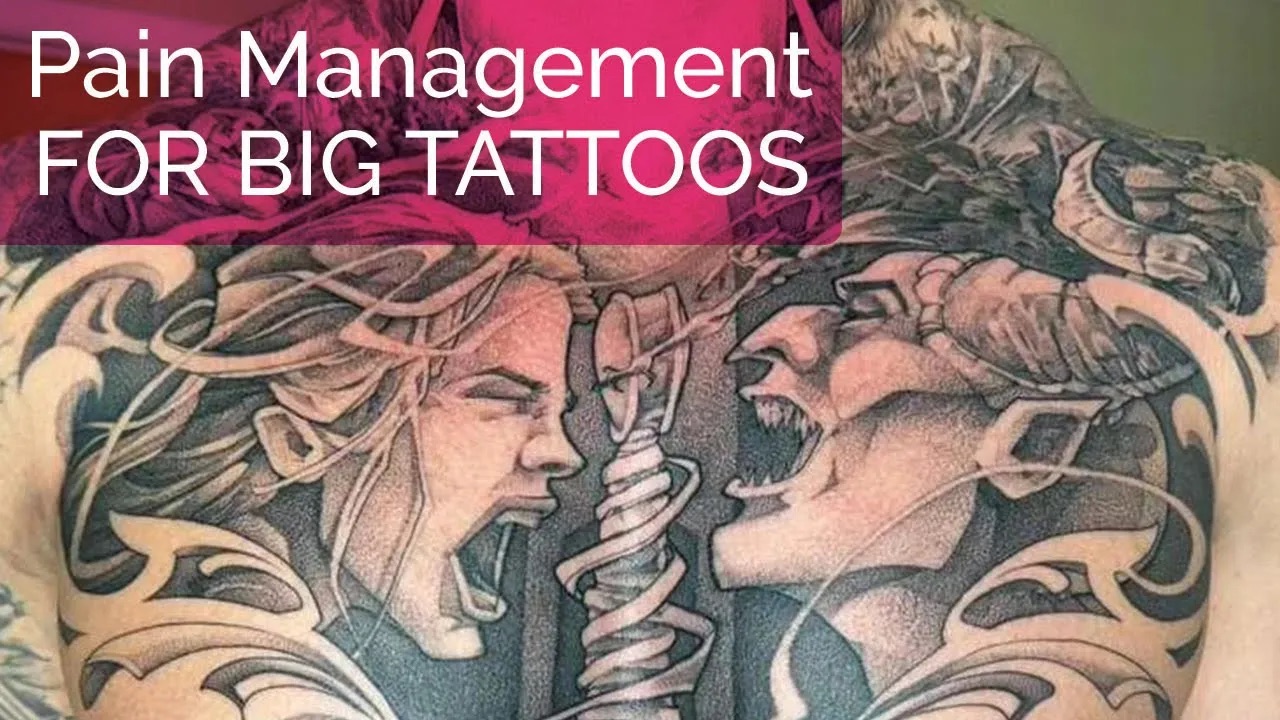
Why Do We Care About Give? - Carson Hill
- 07/24/24